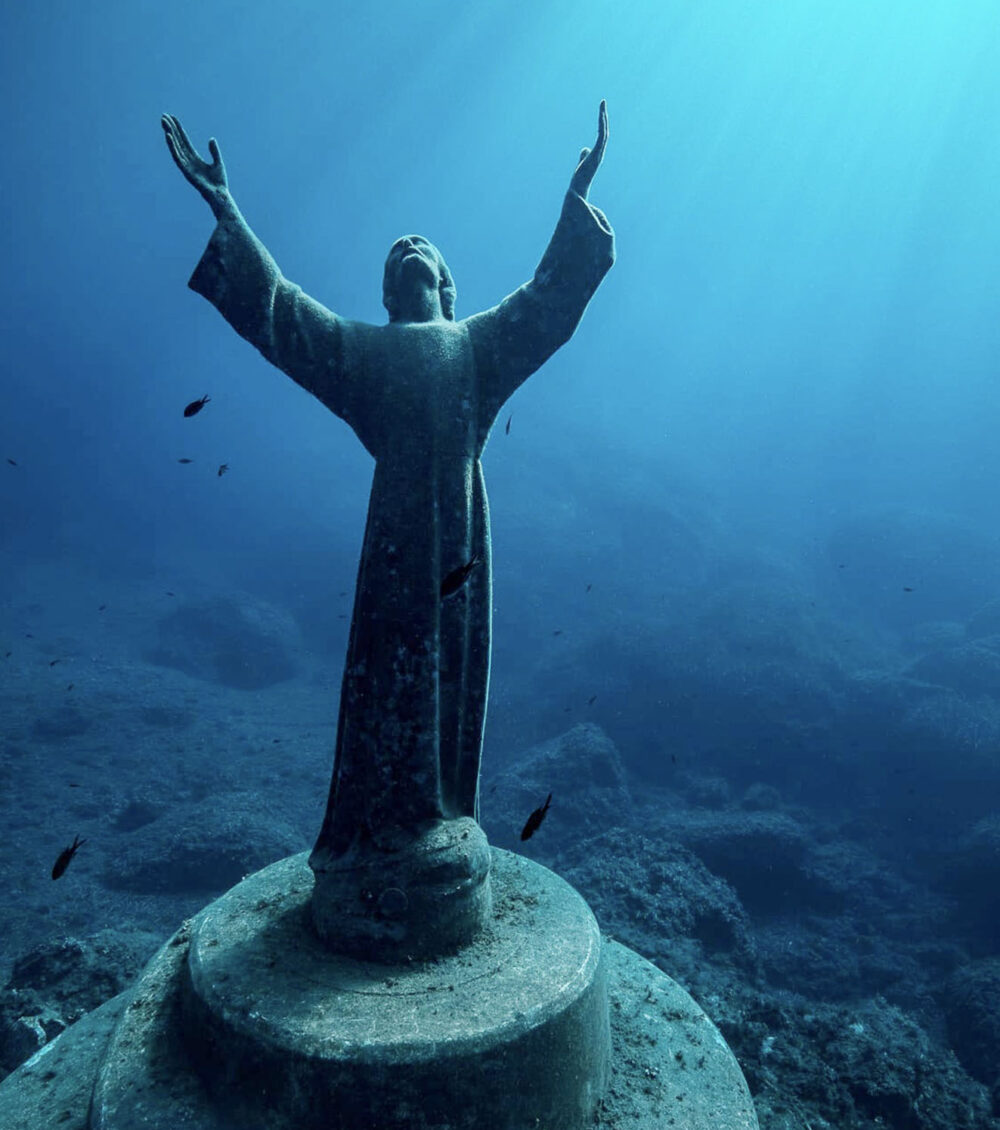San Fruttuoso
Nestled between seas and mountains, San Fruttuoso di Camogli is a little gem of Liguria: it’s a very tiny bay reflected in the crystal-clear sea. Here man has managed to build - almost as if by magic - a few modest fishermen houses, a tower and an elegant church. Hidden and almost inaccessible, this inlet has preserved its beauty unaltered for centuries and the visitor who dares
How to get there
San Fruttuoso di Camogli and the Abbey of the same name are located inside the Portofino Regional Natural Park, and they can only be reached by sea or walking along a few paths.
Reaching San Fruttuoso by boat
Reaching San Fruttuoso di Camogli by sea is definitely an unforgettable experience and it allows to admire the Ligurian coastline and the Portofino Regional Natural Park from a unique viewpoint. Indeed, during the journey you can enjoy the marvellous landscape with its crags plummeting into the sea and the green Mediterranean scrub that occasionally touches the crystal-clear turquoise water.
Boats to San Fruttuoso di Camogli leave from the small ports of Camogli, Portofino, Santa Margherita, Rapallo, Sestri Levante, Lavagna, Chiavari or from the Port of Genoa.
The routes are usually operating all year round and they are more frequent in the summer.


Reaching San Fruttuoso on foot
If you wish to walk to San Fruttuoso, there are many itineraries.
From Portofino Mare.
This is one of the most evocative itineraries in the Park. Start from the little port of Portofino, under the Carabinieri barracks, and go up a mule track signalled with two red circles. Go past San Sebastiano and Cappelletta, and proceed to Base 0. The slope to San Fruttuoso starts here. The trail signs to follow are still the two red circles. It’s about two hours long and the path is easy even though the first part is uphill.
From Camogli by way of Ruta and Portofino Vetta.
At the exit of the Camogli train station, take the stairs on the left until you reach the Church of Boschetto, then proceed along some other stairs and “creuze” (typical Ligurian narrow lanes) to Ruta. Here take the path to Portofino Vetta on the left of the Church, it’s signalled with a red square. From there you will reach the passage Pietre Strette, then go down to San Fruttuoso. The itinerary is about 2 and a half hours long.
From Camogli by way of San Rocco and San Nicolò di Capodimonte.
At the exit of the Camogli train station, go down to the car park in front of the Carabinieri barracks and take the path/stairs to San Rocco. From the Church of San Rocco, go down the path to Punta Chiappa until you reach the Complesso di San Nicolò di Capodimonte. From here take the path to San Fruttuoso. The itinerary is about 3 hours long.
If you wish to reach Portofino coming from Sestri Levante, you need to take the train to Santa Margherita Ligure and then bus n° 82 to get to the village. Whereas to reach Camogli, you just need to take the train and get off at the station of the same name.
The Abbey
The origins of the Abbey date back to the 8th century, when a group of monks found a suitable place for building a church in this bay, near a source of fresh water. Legend has it that the building of the Abbey of San Fruttuoso di Camogli was commissioned by San Fruttuoso himself, that - in a dream – suggested the bay to Prospero, bishop of Tarragona, who fled Spain and brought the ashes of the Saint to safety. However, it is thought that the current Abbey dates back to the 10th or 11th century: it seems that the church was rebuilt by order of Adelaide of Burgundy, the widow of Otto I. Expansion and restoration works were numerous over the centuries, especially thanks to the Doria family who, in 1983, donated the complex to the FAI (Fondo Ambiente Italiano, the National Trust of Italy) which manages it to this day. Besides the Church, the Abbey also includes a Museum that traces its history and an elegant cloister that contains the tombs of the Doria family. La leggenda narra che la costruzione dell’Abbazia di San Fruttuoso di Camogli fu voluta da San Fruttuoso stesso che indicò in sogno la baia a Prospero, vescovo di Tarragona, che fuggì dalla Spagna portando in salvo le ceneri del Santo. L’attuale Abbazia, però, risalirebbe al X – XI secolo: la chiesa, infatti, sarebbe stata ricostruita per volere di Adelaide di Borgogna, vedova di Ottone I. Ampliamenti e ristrutturazioni furono numerosi nel corso dei secoli e si devono soprattutto alla famiglia Doria che, nel 1983, donò il complesso al FAI (Fondo Ambiente Italiano) che lo gestisce tutt’oggi. Oltre alla Chiesa, l’Abbazia ospita un Museo che ne ripercorre la storia e un elegante chiostro che accoglie le sepolture della famiglia Doria.


On the outside, the Doria Tower stands to protect the bay and its water source. It was erected in 1562 on the narrow street that connects the Abbey to the little fishing village, and it was equipped with light and heavy artillery. Today you can go up to the top to enjoy a spectacular view over the sea.
The beach
Right in front of the Abbey of San Fruttuoso there’s a little strip of white pebbles where you can allow yourself a few hours of relaxation after visiting the complex. The beach consists of an equipped area and a public area. In the summer they are both really crowded, so it’s advisable to reach San Fruttuoso early in the morning or late in the afternoon.


The turquoise waters in front of the Abbey hold a bronze sculpture: it’s the Christ of the Abyss. The statue was placed approximately 15 metres deep in 1954. Duilio Marcante had the idea after the death of Dario Gonzatti. For the scuba diving lovers, the dive to the Christ of the Abyss is an exciting experience not to be missed, but also those who practice snorkelling will be able to catch sight of the statue from the surface on calm sea days.
What to eat in San Fruttuoso di Camogli
You can spend an entire day in San Fruttuoso di Camogli and, besides eating a simple sandwich on the beach, it could be a good idea to have lunch in one of the restaurants of the village. All of the places usually offer typical Ligurian cuisine and fresh fish to match with a nice glass of the local wine. Don’t miss the pesto lasagnette (“mandilli de sea”), the prawns of Santa Margherita and a glass of Golfo del Tigullio – Portofino DOC.


